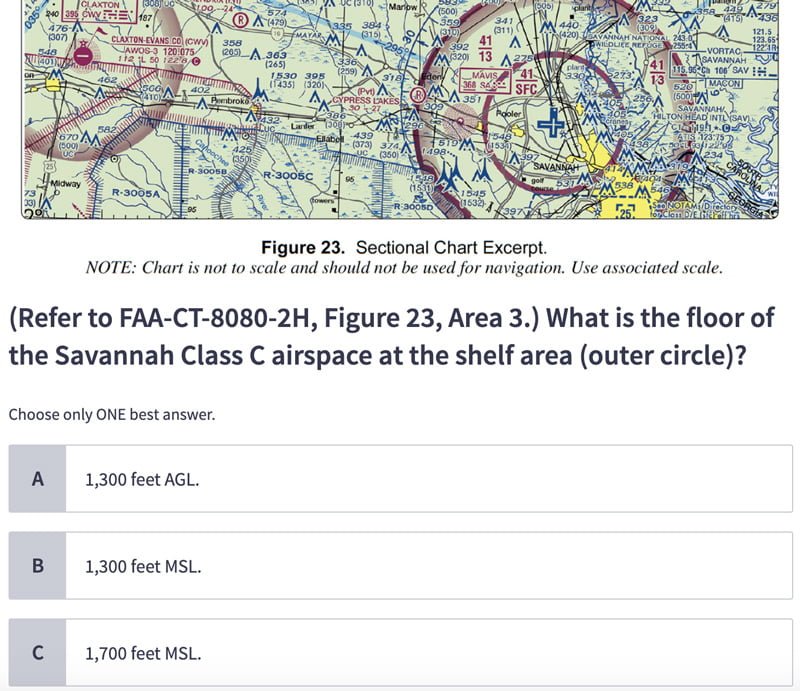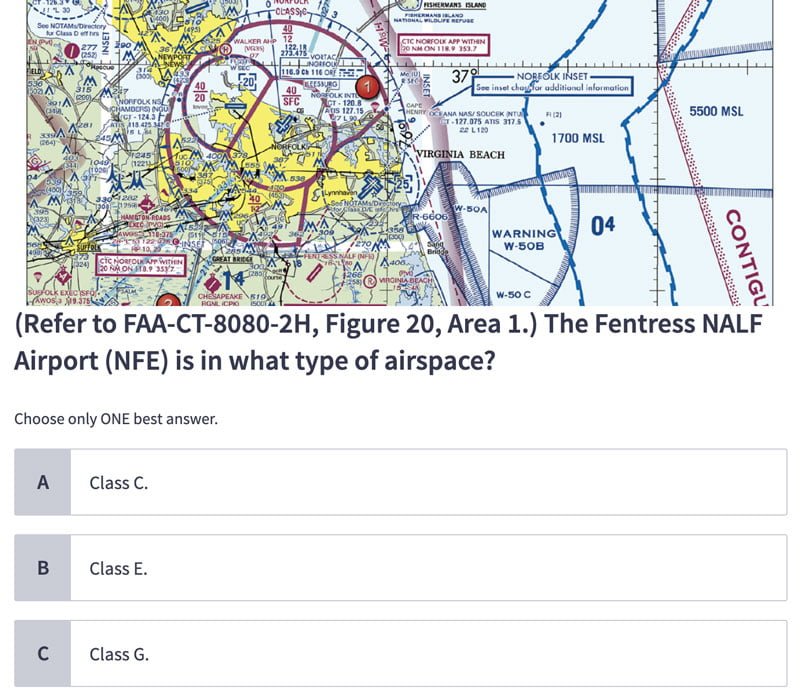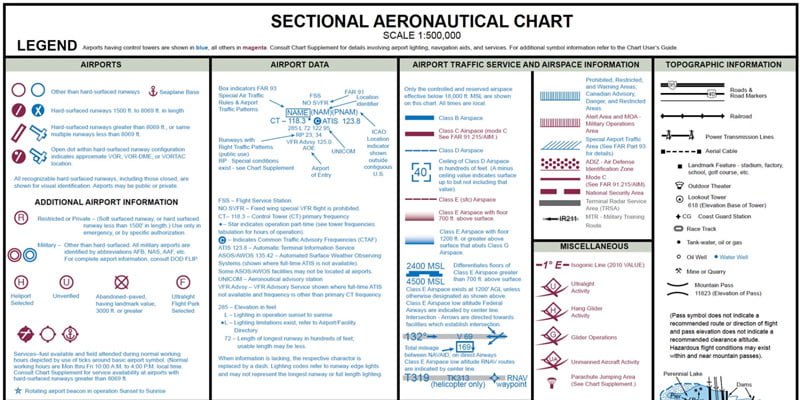Disclosure: This post may contain affiliate links. I earn a small commission of product sales to keep this website going.
These FAA Part 107 test-taking tips are a resource that I offered (still do) in my Part 107 online courses ($25 off for blog readers), but they’re far too critical to keep them holed up there. Especially given how much it costs to fail a test! Who has that kind of money?!
You also won’t find these Part 107 Remote Pilot test tips anywhere else. I did some research to see what other websites were offering you, and their “Ten tips for passing the Part 107 test” lists contain ten different ways to say “study.”
Well, there’s more to it than studying. Yes, studying is important. But so is knowing how to take an FAA test.
How am I qualified to offer advice on this? Well, in my twenty-year aviation career I took over a dozen FAA tests including Private Pilot, Commercial Pilot, Helicopter Instrument Instructor, Advanced Ground Instructor, and Remote Pilot.
I’ve learned a thing or two after taking all of these tests. And here they are. After you study the required material, here’s exactly how to pass the Part 107 test.
Process of Elimination
Hopefully, everyone is familiar with this basic tip for multiple-choice tests. It’s especially relevant for passing the Part 107 test. All questions are multiple-choice with three possible choices.
If you’re stuck on a question, instead of trying to identify the correct answer, try to identify the incorrect answers. Two different ways of arriving at the same point. You’d be surprised how many answers you’ll find if you instead look for the wrong ones.
There will usually be one obviously incorrect answer that you can eliminate right away. Now you only have two to choose from, and this doesn’t feel as psychologically defeating.
Scooby-Doo is a
- Toy poodle
- Shih Tzu
- Great Dane
You may not know what kind of dog Scooby-Doo is, but you can certainly eliminate toy poodle and Shih Tzu!
And sometimes there will be two correct-ish answers. One might be correct in one circumstance while the other is always correct. This is the concept of the most correct answer. Eliminate the least correct answers.
Take a look at the question below, from my Part 107 practice test. While you can fly over people if you have a waiver, you don’t need a waiver to do so. You can always do it if the people are under adequate shelter. So while answer C can be correct sometimes, answer A is more correct. Yes, these things happen on the real test.
When are you allowed to fly over people?
a) If they are under shelter that will protect them from a falling sUAS
b) Never
c) Only with a waiver
RTFQ
Read The Freakin’ Question. Or for my military-type friends…well, you know. If you want to know how to pass the Part 107 test, you have to know exactly what they’re asking!
Part of RTFQ is also RTFA. Be sure to read the full question, read all the answers, and understand every single word before answering.
Take a look at the question below. Questions like this are all over the Remote Pilot test and have screwed over many a pilot throughout the years.

You see the 13 on the chart and know that means 1,300 feet. So you go straight to the first answer that has 1,300 feet. You select A. But that’s incorrect because Class C airspace altitudes are in MSL, not AGL. Slow down and read everything.
FAA tests are also fond of double-negatives. Like, “True/False: A drone owner who isn’t yet 13 years old cannot register a drone.” Doesn’t that suck? Be sure to read every word before answering.
Use the legends and other figures
You’re going to go into the test with a testing supplement book – supplied by the testing center. It has a ton of information in it! Most people won’t open it up until they get to the first question that says something like, Reference Figure 75…
But the first few pages of the book contain legends, like a VFR Sectional Legend, that might be useful for questions you’re stumped on. The answers are right there in the book if you know where to look!
Take the following question for example.

Brain fart! Fentress NALF (near the bottom-middle) is inside a dashed magenta line. Why can’t I remember which class of airspace that means?!
Don’t worry. Go to the front of the testing supplement booklet. The answer is right there in the chart under Airport Traffic Service And Airspace Information – it’s Class E. Along with some great information about airports and special-use airspace.

Many other charts, figures, and legends throughout the testing supplement booklet may help to jog your memory.
Gratuitously mark questions as “incomplete”
One of my favorite Remote Pilot test tips is to mark the questions you want to come back to. It’s a feature of the testing computer system you’ll use.
You don’t have to do the questions in order. You can skip them. You can answer them with only 75% certainty. Whatever you do, mark those questions to come back to later.
As you continue through the test you’ll be exposed to other questions that may help you answer previous questions you weren’t too sure about. Change that 75% certainty to 100% certainty.
For example, one question might ask, “Class D airspace is indicated by a __________ line.” You’re not sure because you’re nervous and are afraid of getting such a simple question wrong and you didn’t look in the test supplement legend. But a few questions later you might see, “The dashed blue line that indicates Class D airspace is below which type of airspace for X airport?” Ah! There’s your answer. Dashed blue line. Good thing you marked it to come back to.
Common sense goes a long way
In my Part 107 courses ($25 off for blog readers), I keep harking on the fact that the FAA tests for understanding, not memorization. You will see questions that you’ve never seen or studied before. I guarantee it!
Thankfully many of these questions can be answered with common sense. For example:
Your sUAS manufacturer does not publish a maintenance checklist. This means that
- No maintenance is required
- The FAA will provide one for you
- As the PIC, you’re responsible for developing your own
This may not be in the study materials. It wasn’t in any of my study materials when I first took the Part 107 test years ago.
However, what was in the study materials was an emphasis on how the PIC has the ultimate responsibility for everything. Common sense says that anything with moving parts requires some kind of maintenance. Common sense also says that if no one provides this for you, it’s ultimately up to you as the PIC.
Take your time!
You have more than enough time to finish this test. It’s not a race.
Take every second of the two hours that they give you, especially if you’re still unsure about some questions. You can’t afford to do this test again.
When you finish the test, go over it again. You have the time. It’d be embarrassing to fail the test because you provided an “AGL” answer when you knew the correct one was “MSL”. But this is something you could catch the second time around – like proofreading.
Additionally, going over the test a second time may jog your memory on questions you weren’t 100% certain about.
So those are my Part 107 Remote Pilot test tips. Yes, you need to study. Yes, you need to know all of the required material.
But you also need to know how to take an FAA test. They’re tricky buggers! This could mean the difference between failing with 68% or passing with 70%.
Do you think you’re ready for the test? Try out my free Part 107 practice test to put some of these techniques to use. This practice test was last updated in 2025 with new questions.
You may also like:
Part 107 Chart Question Walkthrough

Jeff Fowler
Tuesday 21st of June 2022
Thanks for the tips! Just scored 100%
John Peltier
Tuesday 21st of June 2022
Awesome, congrats!